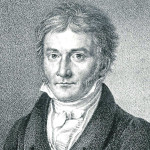
Easter is the first Sunday after the first full moon occurring on or after the vernal equinox
It is not immediately obvious how one might compute the date of Easter at some point in future and yet we need to know such dates in finance when valuing a derivative contract which pays out an amount at some point in the future, the payment is on a good business day, and so one needs to know future public holidays. In some western countries, there are several public holidays associated with Easter; for example, Good Friday, Easter Monday, Ascension Thursday, Whit Monday, and Corpus Christi. For practical purposes a lookup table for a few hundred years is quite sufficient (this is exactly how the Quantlib library manages the calculation), and here I am assuming one even wants to spend time on determining calendars, there are specific vendors who specialise in supplying business holiday calendars.
However, recently I was curious to understand the rules a little better for a different reason and very quickly uncovered, to my surprise, that some serious mathematicians have been involved in algorithms to compute Easter, most notably Carl Friedrich Gauss (R. Bien, 2004).
Johann Heinrich Lambert
Lambert, known for introducing hyperbolic functions, also produced a rule for the Eastern Easter in 1776.
J. H. Lambert, “Einige Anmerkungen über die Kirchenrechnung,” Astronomisches Jahrbuch oder Ephemeriden für das Jahr 1778, Berlin 1776, 210–226
Carl Friedrich Gauss
Gauss, known for the famous normal distribution, produced his Osterformel in 1800. However it was not perfect and was corrected in later years by Gauss and one of his students.
C. F. Gauss, “Berechnung des Osterfestes,” Monatliche Correspondenz zur Beförderung der Erd- und Himmels-Kunde, Aug. 1800 (= Werke VI, 73–79) (Note: Werke = Gauss’collected work, Göttingen 1863)
Augustus De Morgan
De Morgan, known for his work in mathematical logic, cleared up a mis-understanding of the term ‘full moon’ in the rule, it is not an Astronomical moon but a so-called Paschal Moon (it was this aspect of the calculation that sparked my curiosity).
A. de Morgan, “A Budget of Paradoxes,” Volume 1, Chicago and London 1915, 356-357. The first edition appeared in 1872
Donald E. Knuth
Knuth, known for his work in computer science and algorithms, implemented an algorithm to compute Easter.
D. Knuth, “The Calculation of Easter…,” Communications of the Association for Computing Machinery, Volume 5, Number 4, April, 1962, 209–210.
Further Reading
Much more detail concerning the algorithms, and the history of the algorithms, to calculate Easter is found in
Bien, Reinhold. “Gauß and Beyond: The Making of Easter Algorithms.” Archive for history of exact sciences 58, no. 5 (2004): 439-452.